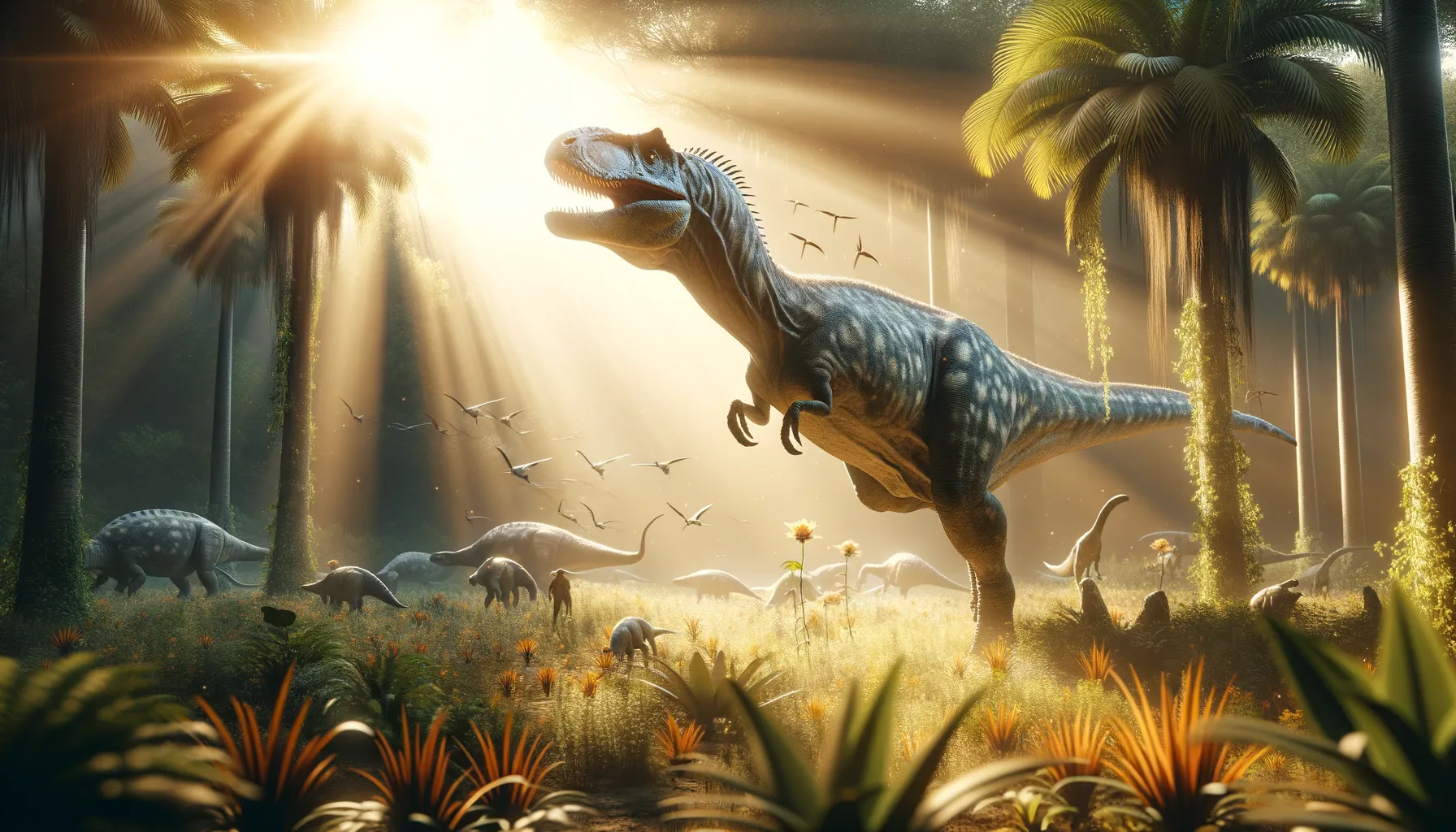
Ponerosteus
An ancient giant of the Czech Cretaceous.
Period
triassic
Length
Roughly 8 to 10 meters in length.
Height
Approximately 2 to 3 meters tall at the hips.
Weight
Estimated around 500 to 700 kg.
Ponerosteus was a remarkable dinosaur that roamed in what is now Europe during the Cretaceous period. This dinosaur's remains help us understand the diversity of the ecosystem at that time. Although much about its lifestyle remains mysterious, it is believed to have been herbivorous. The discovery of Ponerosteus contributes valuable insight into the evolutionary adaptations of its time.
Diet
Ponerosteus likely had a herbivorous diet, feeding on plants and foliage available in its environment. Its teeth and jaw structure suggest it was adapted to a diet rich in vegetation.
Hunting
As an herbivore, Ponerosteus did not engage in hunting behavior. Instead, it likely foraged for plant materials and used its long neck to reach various plant sources.
Environmental challenges
Ponerosteus faced challenges such as fluctuations in climate that could alter the availability of plant life. Natural predators might have posed threats to young or weaker members of its species. Changes in sea levels during the Cretaceous could also have impacted its habitat and food supply.
Speed
Likely slow due to size and build.
Lifespan
Estimated to be several decades.
First discovery
Discovered in the Czech Republic in 2000.
Fun Facts
- Ponerosteus was a dinosaur that lived during the early Cretaceous period, around 130 million years ago.
- The name Ponerosteus means 'wretched bone', which indicates that it was initially identified from rather incomplete fossil remains.
- Fossils of Ponerosteus have been found in present-day Europe, specifically in the Czech Republic.
- Ponerosteus was a small dinosaur, possibly a theropod, which suggests it might have been a carnivore or scavenger.
- Since its discovery, Ponerosteus has puzzled scientists due to the limited amount of fossil evidence available, making it a mysterious dinosaur.
- It is believed that Ponerosteus might have been a part of a larger family of small, two-legged dinosaurs that roamed ancient Europe.
Growth and Development
Ponerosteus likely experienced slow growth, taking several years to reach maturity. Its development might have involved changes in size and bone structure as it adapted to its environment. This gradual growth would have helped it adapt to environmental pressures over time.
Habitat
Ponerosteus inhabited lush, forested regions where it could easily access a variety of plant life. Its surroundings were rich with vegetation, providing ample food sources. This environment supported a diverse array of flora and fauna during the Cretaceous.
Interaction with other species
Ponerosteus coexisted with other herbivorous and carnivorous dinosaurs, which might have influenced its behavior and stress levels. Social interactions within its species likely revolved around foraging and migration. It may have had to defend its territory or resources from competitors.
Natural lifespan
Ponerosteus had a natural lifespan of several decades.
Reproduction
Ponerosteus likely reproduced by laying eggs, a common trait among many dinosaurs. Nests would have been made in secluded areas to protect the young. Parental care, if present, might have included safeguarding the eggs and young from predators.
Social behaviour
While little is known, Ponerosteus might have been a social creature, moving in herds to enhance protection and foraging. Such group dynamics could have facilitated its survival in varying environments. The social structures may have been loose, focusing primarily on immediate survival needs.
Fossil locations
Fossils of Ponerosteus were first discovered in the Czech Republic. These findings provide essential data to understand its distribution and evolution. Its remains have primarily been associated with Central Europe.
